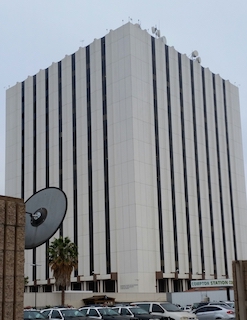Our client, age 20, was returning home from work. It was past 9:00 p.m. He dropped off a co-worker in the City of Paramount and then, knowing he was late, decided to drive fast. As he approached a traffic light, it turned yellow and our client slammed the accelerator fully to the floor. He was driving a full-sized, new pickup truck that had a lot of power from its eight cylinder engine.
His truck jumped from 35 miles per hour to well over 55 miles per hour as he neared the intersection. Our client had badly misjudged making it through the intersection on a yellow light. The light turned red fully fifty feet before our client reached the intersection.
However, he was traveling so fast, he could not slam on the brakes to stop in time. Instead, he knew he had to simply go through the intersection. He was in a Hobson’s choice – slam on his brakes and possibly lose control and crash, or proceed through the intersection and possibly crash as well.
As he entered the intersection on a red light, a car from his left entered the intersection on a green light. The impact was unavoidable and severe. Our client slammed into the small car, spinning it into three other cars waiting for the red light on the other side of the intersection. Our client also spun around, impacting one of the other three cars as well.
The first car our client hit had two people in it. It was a Toyota Celica. The front right seat passenger, a 73 year old woman, died instantly. Indeed, she absorbed the majority of the impact. The driver of the car miraculously escaped with only minor injuries.
Two more people hit by our client’s car and the Toyota Celica were also injured.
In total, five people were transported from the scene by ambulance. While our client was not under the influence of any drug or alcohol, three out of the four other people surprisingly were.
Our client sustained significant internal injuries and remained in the hospital for four days. Once he was released, he returned home.
More than a year later, he received a letter from the Compton District Attorney’s Office notifying him that a bench warrant had been issued for his arrest. The letter advised the client that he ought to report to the Compton Superior Court to address the warrant.
Our client instead called Greg Hill & Associates. It was a Saturday afternoon. Greg discussed the client’s case with him and recommended he first contact a bail bondsman to arrange for a bond to be posted should the judge deny a request for own-recognizance (OR) release. After all, it was a manslaughter case and our client had shown poor discretion in how he drove.

Greg and the client then agreed to go to the Compton courthouse in three days. Greg called the District Attorney’s office there and, as a courtesy, spoke with the handling prosecutor to let her know of our intentions so she could have her file there in the courtroom and review it, if she wanted to prior to the hearing.
Greg and the client, now 21, then did appear and the judge did recall the bench warrant. Greg then requested that our client be allowed to be released without bail, on his own recognizance (OR). The judge was a bit skeptical, as we expected, but Greg explained that our client never did sign a promise to appear in court, as he was hospitalized immediately after the crash.
Greg also explained that the client only received the letter about the bench warrant three days ago and came to court immediately. He further explained that our client had no prior history and had been driving for the last year without any further incidents. These two factors, no prior history and a year of safe driving post-accident, when added to our client’s sense of urgency (and respect for the court) in coming to court immediately, persuaded the judge to grant our client’s own recognizance release.
This ruling saved our client approximately $4,000 in funds that he otherwise would have had to spend to post the $50,000 bond. He and his wife, also 21, were very happy.
For more information about bail and reducing bail, please click on the following articles:
- What Is Bail and Can It Be Reduced?
- How Is Bail Set?
- When Can a Judge Attach Conditions to Bail or Deny Bail?
Contact us.  Compton Courthouse
Compton Courthouse